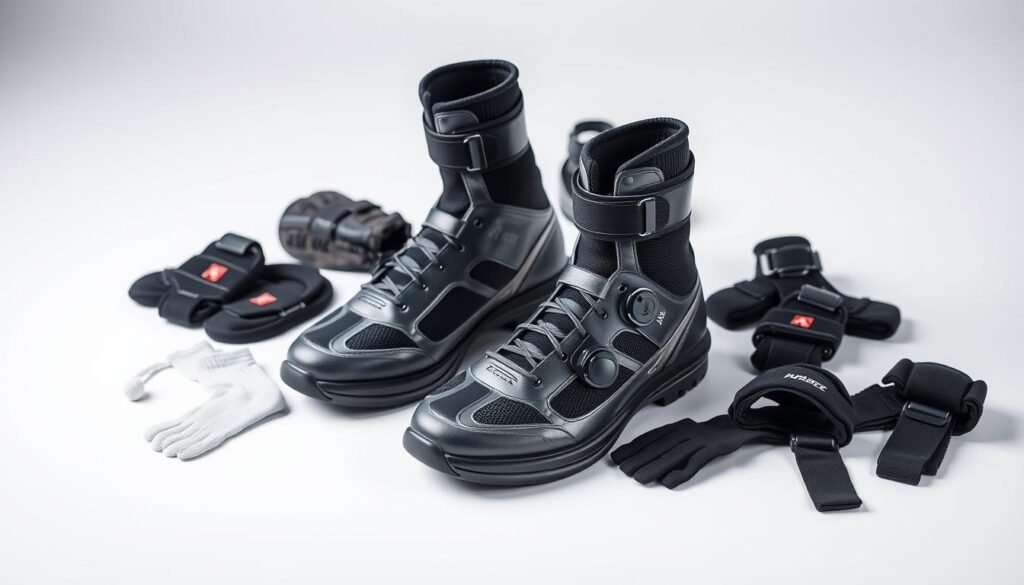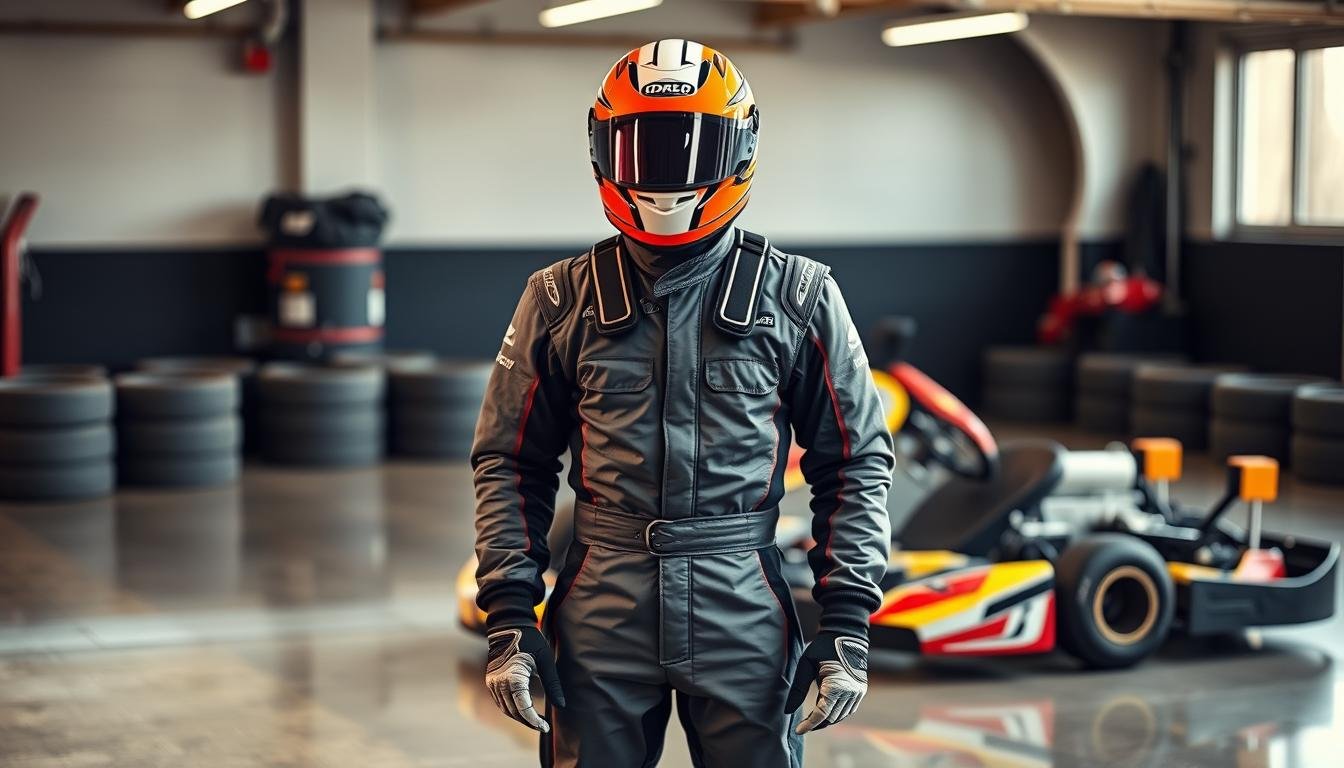Stepping onto the karting track delivers an unmatched adrenaline rush, but proper preparation separates casual participants from those who truly maximize their thrill-seeking adventure. While facilities supply core safety gear like helmets and fire-resistant suits, smart clothing choices directly impact both performance and protection during high-speed sessions.
Newcomers frequently overlook how track conditions and kart mechanics influence apparel needs. Snug-fitting layers prevent fabric snags on steering components, while closed-toe shoes ensure precise pedal control. Many venues require personal balaclavas for hygiene under shared helmets – an item worth packing to avoid last-minute purchases.
Seasoned drivers know approved safety gear must pass rigorous inspections before hitting the asphalt. This standard applies equally to first-timers using track-provided equipment and veterans sporting custom race suits. Understanding these protocols prevents delays and lets you focus on mastering hairpin turns.
Strategic attire selection transforms a potentially overwhelming experience into a confidence-building motorsport introduction. From moisture-wicking base layers to impact-resistant footwear, every detail contributes to safer, more enjoyable track time that keeps beginners returning for more speed-fueled excitement.
Key Takeaways
- Track-provided safety gear requires complementary personal items like balaclavas for hygiene compliance
- Form-fitting clothing prevents interference with kart controls during maneuvers
- Closed-toe footwear ensures proper pedal responsiveness and foot protection
- All personal safety equipment must meet ISO certification standards
- Prepared attire choices reduce setup time and maximize track session duration
- Proper layering systems manage body temperature across varying track conditions
Understanding the Importance of Karting Attire
Mastering karting demands more than skill—strategic clothing choices form your first line of defense. Outfits that balance safety and flexibility let drivers focus on technique rather than adjusting ill-fitting gear mid-race.
The Role of Comfortable Clothing
Snug yet breathable fabrics enable swift movement during sharp turns and sudden stops. Loose sleeves or baggy pants risk catching on steering wheels, while restrictive materials hinder pedal control. Moisture-wicking layers prevent overheating, keeping drivers alert through multiple laps.
Impact on Safety and Performance
Proper attire shields against flying debris and minor abrasions during high-speed slides. Flame-resistant materials add critical protection, though even casual racers benefit from closed-toe shoes and fitted jackets. Studies show drivers in right clothing maintain focus 23% longer than those distracted by discomfort.
Balancing safety standards with personal comfort creates optimal conditions for skill development. Racers who prioritize both elements consistently report faster lap times and heightened confidence on challenging tracks.
What to Wear for Your First Karting Experience
Smart apparel decisions elevate rookie racers from anxious newcomers to confident competitors. Facilities emphasize stretchable fabrics that mirror body movements while seated in low-slung karts. A cotton tee paired with broken-in jeans remains the preferred starter combination, offering unrestricted steering motion and pedal control.
Recommended Karting Outfit Breakdown
Modern athleisure options provide upgraded performance through breathable polyester blends. These technical fabrics wick sweat during intense races while maintaining structural integrity. Non-binding denim proves ideal for cockpit entry/exit maneuvers without compromising knee flexibility during sharp turns.
Seasoned instructors advise against delicate garments – track environments often feature grease spots and rubber debris. Opt for dark-colored clothing that hides inevitable dirt while allowing full range of motion. Layered outfits adapt to temperature changes, though bulky hoodies create steering interference risks.
Footwear demands equal attention – snug sneakers with grippy soles enhance pedal responsiveness. Avoid loose laces or thick soles that might catch on kart components. Complete your track-ready ensemble with moisture-wicking socks and a slim-fit jacket if needed, ensuring every element supports dynamic driving positions.
Essential Clothing Items for Karting
Karting success begins with gear that merges safety and precision. While helmets grab attention, your shoes and clothing form the foundation of track performance. These elements determine how effectively you interact with pedals and steering wheels during high-speed maneuvers.

Footwear Essentials: Trainers & Shoes
Closed-toe athletic trainers reign supreme for pedal control. Look for soles with micro-grooves that grip metal surfaces without sticking. “Your feet become extensions of the kart’s controls,” notes professional racer Lyla Chen. “Ill-fitting footwear compromises reaction times by milliseconds that add up over laps.”
Double-knotted laces prevent slippage during aggressive braking. Avoid bulky soles that reduce pedal sensitivity – thin rubber layers transmit feedback best. Track veterans often pack dedicated karting shoes, but quality cross-trainers work perfectly for rookies.
Proper Fitting Clothing for Maximum Control
Snug garments prevent fabric from catching on steering columns while allowing full torso rotation. Stretchable cotton-poly blends outperform stiff materials during sharp turns. Elastic waistbands maintain comfort in the kart’s bucket seat without restricting leg movement.
Loose sleeves or dangling accessories pose serious risks near moving parts. Opt for fitted jackets with zippered pockets to secure personal items. Dark colors hide inevitable track grime while helping drivers stay focused on racing lines rather than stains.
Safety Gear: Helmets, Gloves, and More
High-speed karting demands more than skill—proper safety gear forms the critical barrier between driver and danger. Every piece serves specific protective functions while meeting strict track compliance standards. Understanding these requirements ensures both immediate track access and long-term racing enjoyment.
Helmet Guidelines and Compliance
Track-provided helmets undergo rigorous testing to meet impact resistance standards. “Personal helmets must display valid ISO certification stickers,” explains veteran track marshal Carlos Rivera. “We inspect every private unit before greenlighting track entry.” Facilities often stock multiple sizes with adjustable padding for optimal fit.
Long-haired drivers require extended balaclavas to prevent hair entanglement. These moisture-wicking liners maintain helmet hygiene while absorbing sweat during intense sessions. Always secure chin straps snugly—a loose helmet shifts during sharp turns, compromising visibility and protection.
Importance of Karting Gloves and Additional Gear
Mandatory gloves prevent blisters while enhancing steering wheel grip. Most tracks offer sanitized communal pairs, though regular racers prefer personal sets with reinforced palms. Look for flexible knuckle protection that doesn’t restrict finger movement during rapid gear shifts.
Advanced racers often add rib protectors and neck braces for high-impact events. While not required for casual sessions, these additional safety layers reduce injury risks during competitive races. Eye protection becomes essential in open-cockpit karts where debris exposure increases.
Investing in quality gear pays dividends through improved comfort and durability. Compliance checks become effortless when equipment meets all published track specifications, letting drivers focus solely on perfecting their racing lines.
Choosing the Perfect Karting Outfit for Different Occasions
Karting events range from casual laps with friends to corporate competitions, each demanding unique outfit strategies. While safety remains non-negotiable, smart racers adapt their clothing to match the event’s vibe without compromising performance.
Corporate Events vs. Celebration Races
Business team-building days thrive on polished looks that transition from boardroom to track. “Pair slim-fit chinos with moisture-wicking polos,” suggests event coordinator Mia Tanaka. “This maintains professionalism while allowing full steering rotation under protective overalls.”
Birthday parties and stag weekends encourage creative flair beneath mandated race suits. Tutus or superhero shirts work if covered by facility-provided gear. Stretchy fabrics prevent discomfort during extended sessions, whether you’re snapping group photos or battling for podium positions.
Competitive racing requires ruthless practicality. Seasoned racers opt for seamless base layers that reduce chafing during hour-long heats. Prioritize breathability over style when every second counts on timing sheets.
Post-race plans influence choices too. Corporate groups often need presentable attire for networking, while casual days favor quick-dry materials that handle sweat and celebratory drink spills. Always verify track rules about visible logos or accessories before finalizing your day‘s ensemble.
Dressing for the Weather: Summer, Winter, and Rain
Track conditions and body temperature management become critical factors in karting success. Racers must adapt their clothing choices to combat seasonal challenges while maintaining peak responsiveness. Proper weather preparation prevents distractions and keeps focus locked on racing lines.
Summer Karting: Lightweight and Breathable Fabrics
High temperatures demand technical fabrics that pull sweat away from skin. Polyester-spandex blends offer stretch and ventilation during intense sessions. Light gray or white shirts reflect sunlight better than dark colors, reducing heat absorption by up to 20%.
Moisture-wicking socks prevent slippery feet in pedal zones. Many tracks ban sleeveless tops due to safety regulations, so opt for mesh-backed jerseys. “Breathable doesn’t mean flimsy,” notes Arizona Speedway’s lead instructor. “Your summer gear still needs abrasion resistance.”
Layering Up in Winter Conditions
Thermal base layers paired with fitted fleece jackets maintain core warmth without bulk. Avoid puffy coats that limit steering rotation. Merino wool neck gaiters protect against wind chill while allowing full helmet movement.
Heated insoles become game-changers during frosty morning races. Keep gloves thin but insulated – bulky winter mittens reduce steering feedback. Always check that layers lie flat against your body to prevent snagging on seatbelts.
Rainy sessions require waterproof shells with sealed seams. Look for jackets featuring armpit vents to balance moisture protection and airflow. Track rubber compounds behave differently when wet, making grip-focused footwear even more crucial. Quick-dry pants prevent chafing during prolonged damp conditions.
Avoiding Clothing Hazards on the Track
Racing safety extends beyond helmets and gloves – what you wear under protective gear matters. Fabric choices and accessories create hidden risks when interacting with kart moving parts. Proactive preparation prevents accidents before engines start.
Spotting Dangerous Outfit Choices
Loose clothing ranks as the top track hazard. Flowing sleeves or untucked shirts can get caught in steering columns or seatbelts. Even slightly baggy pants may snag during cockpit entry, delaying your session start.
Accessories become projectiles at high speeds. Metal jewelry risks scratching helmets, while sunglasses fly off during sharp turns. Secure all personal items in lockers before approaching the track.
Long hair requires special attention. Tracks mandate balaclavas under helmets to prevent strands from getting caught in harness buckles. Extra-length liners accommodate ponytails without compromising safety gear fit.
Thick layers cause overheating once adrenaline surges. Opt for slim-fit moisture-wicking fabrics instead. Remember: track staff will halt races if they spot loose clothing near moving parts, so double-check your outfit pre-session.

Ramon Splinter is a passionate go-kart enthusiast and expert who shares valuable tips and insights on Zyorb, a blog dedicated to karting enthusiasts. With years of experience on the track, he specializes in helping beginners and seasoned drivers improve their skills, optimize their karts, and master racing strategies. His articles combine technical knowledge with practical advice, making go-karting more accessible and exciting for all.

